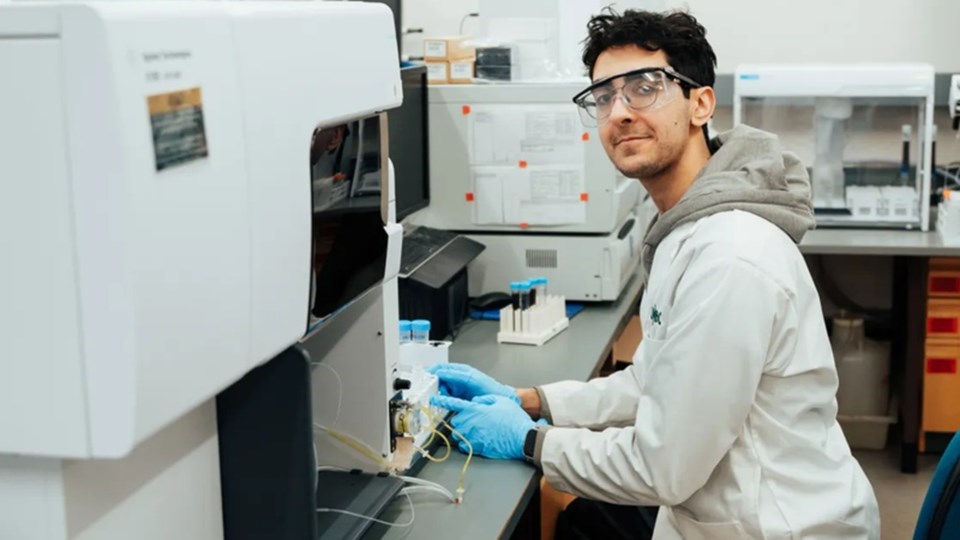A University of Northern BC graduate student is researching better ways to measure and identify air pollutants — and that could have big implications for communities like Valemount, which struggle to identify the sources of poor air quality.
PhD student Ahmad Jalil has been researching air quality and pollutants since his days as an undergraduate student at the university.
“One of the biggest things I noticed is that there’s a lack of real air quality monitoring [in Prince George],” Khalil said of his early research. “That’s where my current PhD project came about, where we’re using the low-cost air quality monitors … to give a neighbourhood-scale heat map of where the air quality is good and where the air quality is bad within the city of Prince George.”
Jalil found that black carbon — more commonly known as soot, the fine particulate matter that comes from burning organic material — is a common pollutant in Prince George. But because black carbon can come from burning anything from diesel to wood, it’s hard to nail down what the exact source of the pollutant is, according to Jalil.
That’s why he is refining air quality measurement methods to identify the sources of air pollution, as well as which locations suffer from the most pollution.
“A lot of it is anecdotal. Everyone knows, ‘Oh, downtown PG is good, College Heights is bad,’ but there’s actually no data to point to that,” Jalil said. “The ministry doesn’t have any sensors there. There’s no official monitoring station, either.”
This poses a problem for local governments who only have one air quality monitor or whose communities have many potential sources of black carbon. It’s next to impossible to implement policy changes if you don’t know where your air pollutants are coming from, Jalil said.
“Right now, I find that a lot of policies related to air quality are directly driven with the ministry’s sensors, which is good because it’s validated data. But the issue is the ministry doesn’t really care about local air quality — their actual goal is regional air quality,” he said.
Communities like Valemount could use this research to identify the source of black carbon in the area — whether it is from fossil fuels or burning wood, he said.
Jalil is currently completing an internship with the University of California, Davis and NASA, where he is continuing his research by analyzing black carbon data in Ethiopia. His ultimate goal is to empower residents and government officials with air quality data that is precise and accessible.
He hopes to create software that can display air quality data in the form of a heat map, showing which areas have the poorest air quality, as well as seasonal air quality data. After excluding outlying data points such as nearby wildfires or other natural phenomena which increase air pollution, the database could give policymakers a sense of which times of year air quality is the lowest and which neighbourhoods are the most affected.
“The ideal outcome would be having an accessible resource for not only policymakers, but also individuals,” Jalil said. “A lot of the air quality action you’ll see is actually done more by citizens who are concerned [and] bring in these decision-makers to actually do the change.”




